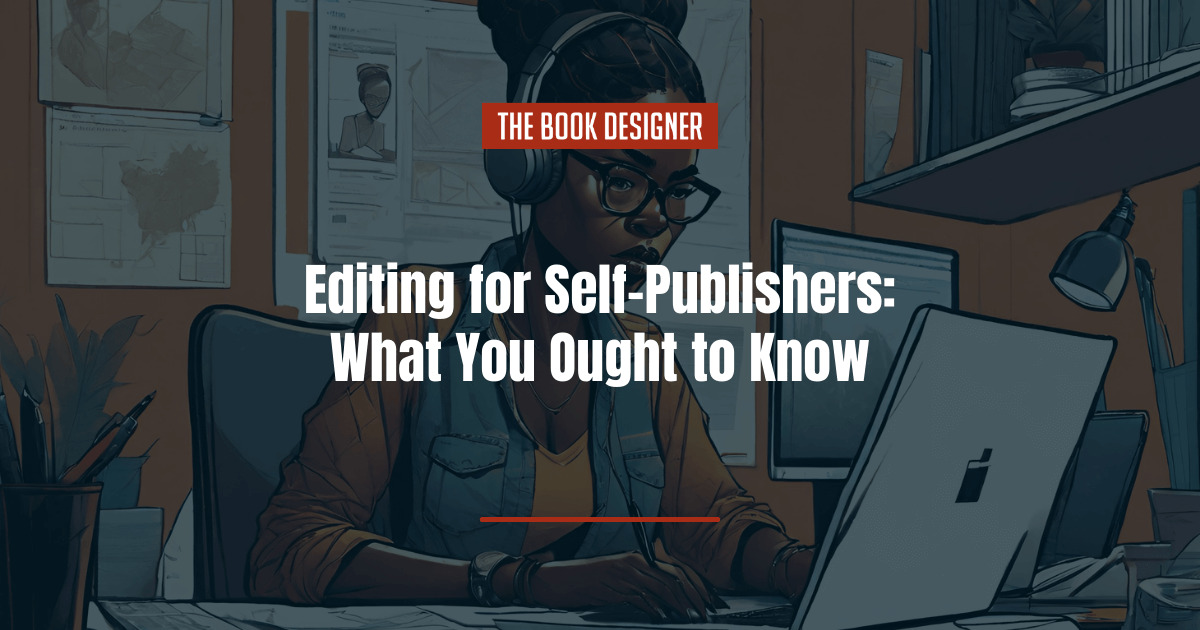Note: This article on editing for self-publishers is largely based on a transcript of one of Joel Friedlander’s original podcast episodes for The Book Designer. You can listen to the original episode above.
New self-publishers are often confused about how the editorial process works. They want to know what takes place at each stage of their book’s development.
It seems that if you have a map, even if it’s a sketchy one, it’s easier to understand where you are on the road to getting your book into print. Let’s take a look at the stages through which your book moves.
Keep in mind that the entire editorial process may be long, extending from before the completion of the manuscript through proofreading of the final page proofs. Self-publishers need to understand the whole process so they can hire people with the specific expertise needed to complete their project.
Although publishing houses vary widely in how they implement the editing process, and change has also come over time, this schematic is intended to be a simple and helpful “map” to the journey of your book from manuscript to printed books.
Here’s what’s covered in this article about editing for self-publishers:
Editing for Self-Publishers: Developmental Editing
Before you even finish your book, perhaps before it’s more than an outline, a sample and an idea, you may start the editorial process. The first kind of editing you will encounter is developmental editing.
Developmental editing, as the name implies, helps develop the author’s concept and voice, the scope of the book, the intended audience, even the way elements of the book are arranged. The relationship between author and developmental editor is intimate, and their work is something of a collaboration.
It can require a great deal of time, as the author responds to the editor’s suggestions, and may require a good deal of patience and tact, since the editor may be instrumental in helping to shape the final work.
Developmental editing can be assigned to specific editors, or some of these functions may be done by either the author’s agent or an acquisitions editor at a publisher. Self-publishers who make use of this type of editing will hire freelance editors to help with the development of their project.
Copyediting for Self-Publishers
When the author and developmental editor have finished organizing the manuscript, and the editor considers it complete and ready to take the next step, it will go to a Copyeditor.
Copyediting is accomplished by editors who examine the manuscript line by line, word by word. It takes people who are meticulous, excellent at spotting errors, and who mostly don’t mind working without interference or accolades from the world outside.
Copyeditors have vast knowledge of English vocabulary and usage, command over style resources such as the Chicago Manual of Style or other style guides in use at the publishing house. In reviewing the manuscript, they will be paying attention to and correcting:
- Punctuation, capitalization, spelling, and grammar
- Errors in word usage
- Subject-verb agreement
- Consistency in treatment of material
- Adherence to establish standards of style and formatting
- Accuracy and completeness of citations, references, notes, tables, figures and charts
- Ambiguity, incorrect statements, lapses in logic, libelous comments, and so on.
In the course of editing the manuscript, most copyeditors will also produce a style sheet for the book listing the correct spellings of any unusual names, the proper format for each element in the manuscript, and any other usage or style guidelines that will be useful to other people reviewing the book farther down the production line.
When the copyeditor has finished her work, the manuscript goes back to the author for clarification of any remaining open questions, and then the changes are input into the manuscript.
Manuscript to Book Page Proofs: Production Editor
The manuscript is next routed to a Production Editor who will be responsible for the entire production process. The tasks of the production editor include:
- Scheduling the project and tracking its progress
- Hiring and coordinating the work of the book designers, illustrators, indexers, proofreaders and other professionals needed to complete the book
- Getting estimates from printers or print brokers for the physical production of the book
- Making sure the books are properly printed and delivered on time.
Book Page Proofs: Proofreading
The last stage in the editorial process is proofreading the book. This step can be easily overlooked in self-published books, to their detriment. The proofreader is the last guardian of the publisher’s reputation for accuracy and care, the protector of the author’s reputation for diligence, and sometimes the least noticed professional to handle the book in its journey.
Proofreaders examine the book’s complete and final pages for more than typographical errors, although that’s a big part of the proofreading job. In addition, they will be on the lookout for:
- Inconsistent line, word, or page spacing
- Misnumbered list items and mislabeled captions
- Improper word breaks
- Page break problems like widows and orphans
- Irregularities in the use of the books type fonts
- Accurate and consistent page headers, footers and page numbers
- Accuracy and completeness of tables, figures, charts, and graphs
- Consistent use of abbreviations and acronyms.
The End of the Line
When the proofreader is finished with their work, the book is corrected for the last time. Once the pages are set, the final page proofs can be sent to an indexer, if one is being used on the project, and the book will be ready to go to press.
In brief: Developmental editors help shape the work in progress; Copyeditors correct the language, usage, and consistency of the manuscript; Production editors manage the physical manufacturing of the book, and Proofreaders hunt down and fix any errors that have crept into the book. All are necessary to produce a top-quality book.




